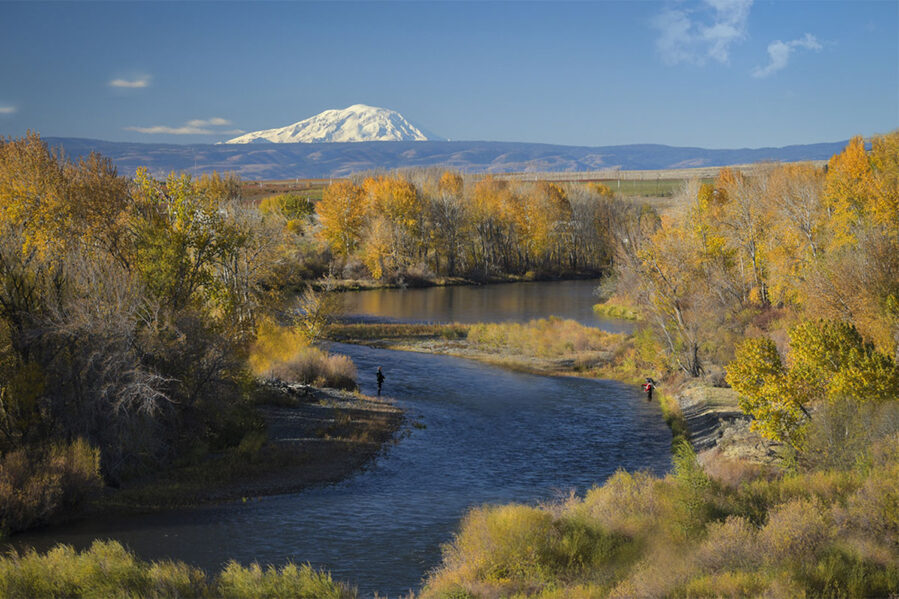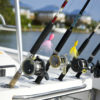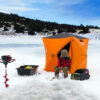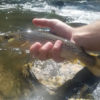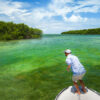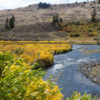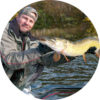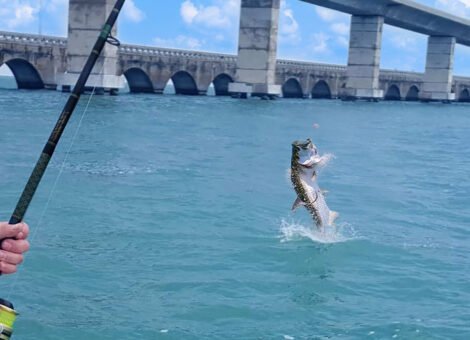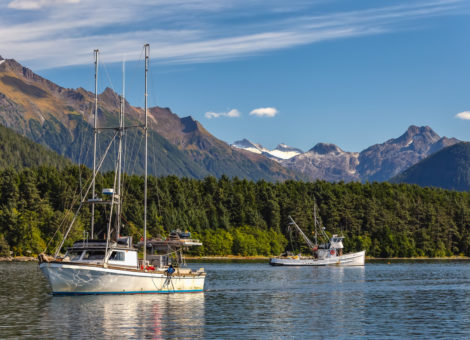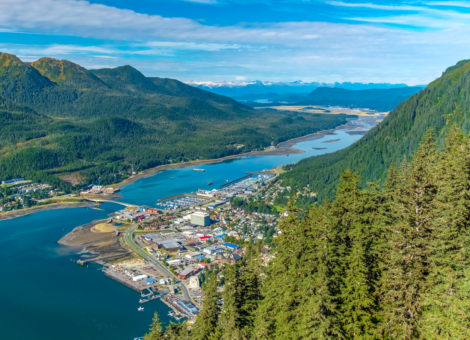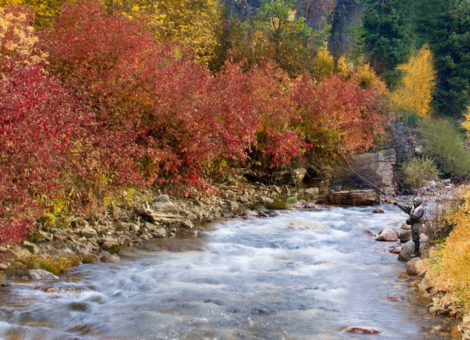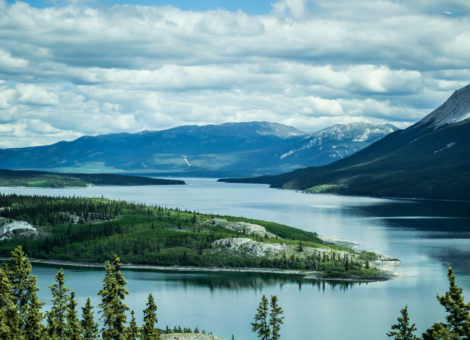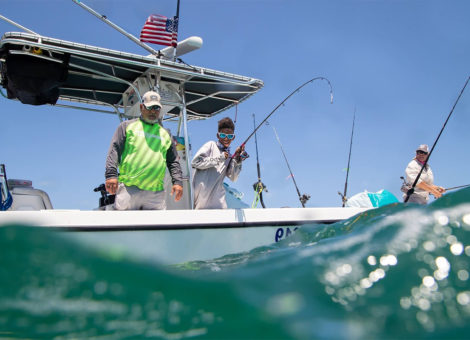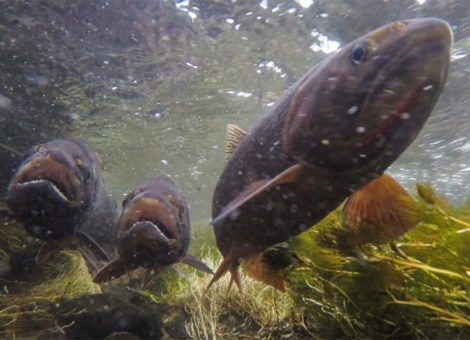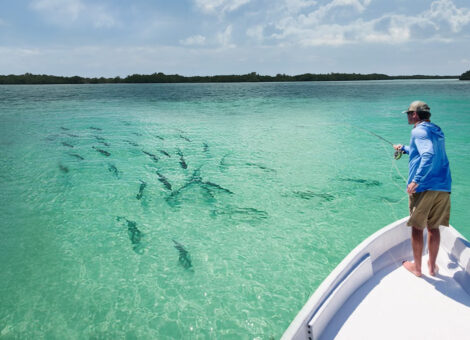Yakima River is Washington State’s only Blue Ribbon trout fishery, and one of the best fly fishing rivers in the Pacific Northwest. The Yakima draws anglers from across the globe to wet their line and try their hand at hooking a trophy rainbow or a native Westslope cuttroat trout.
The Yakima River offers over 70 miles of cold-water trout fishery. You can find trout throughout the Yakima but the best fly fishing exists from Easton Diversion Dam downstream to Roza Dam. Beyond Roza Dam, the water warms, trout numbers dwindle, and Yakima becomes primary a bass and catfish fishery.
- What you’ll catch
- Where to wet your line
- How to fly fish the Yakima
- When to fish the Yakima
- Fly fishing tips and techniques
- Fly patterns, hatches and rigs
- Fly fishing regulations
What you’ll catch
The Yakima river is known for offering some of the best fly fishing for rainbow trout in the Northwest. You might find some bigger specimens elsewhere, but the rainbows on the Yakima are healthy, vibrant and they’ll chase a fly. Average Yakima rainbows are in the 12-14 inch range, with a few lunkers over 20 inches.
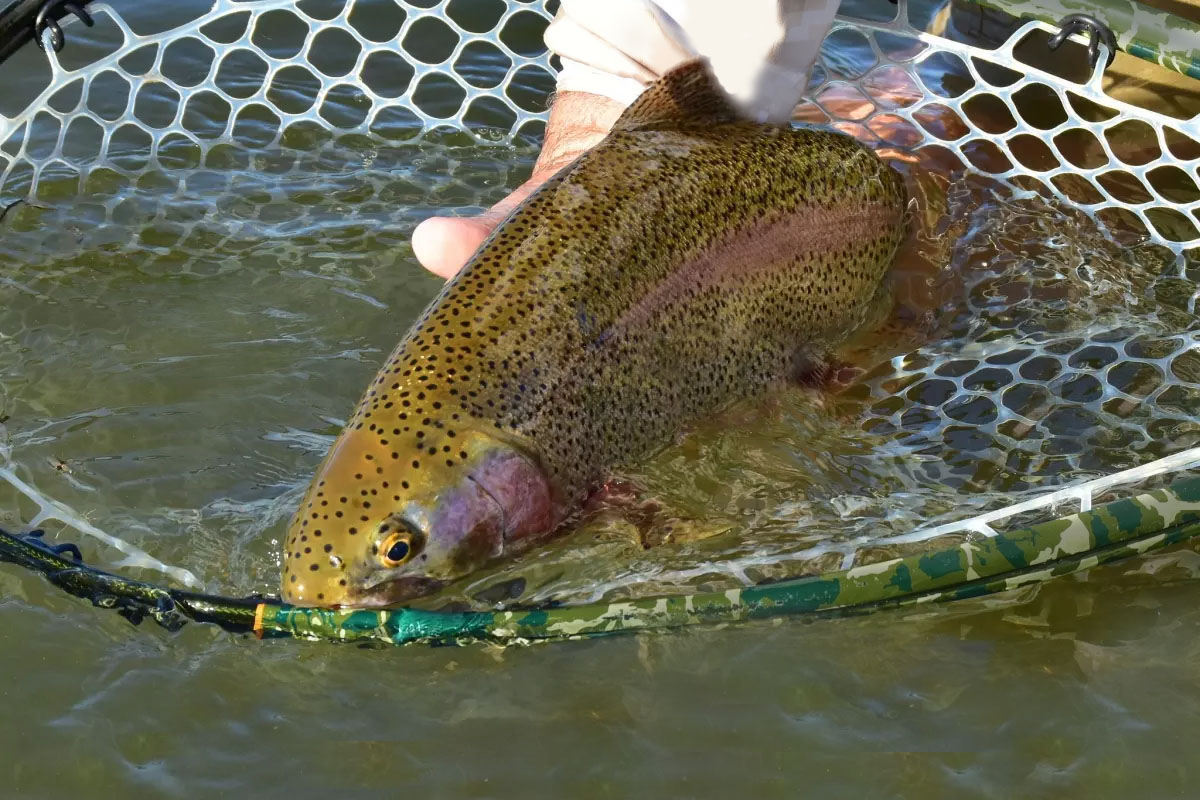
Rainbows attract a lot of anglers to fish the Yakima river, but it’s the Westslope cutthroats that draw the crowds. Yakima cutthroats are vibrant and fiesty. They chase surface flies like fido chases a ball. Cutthroats are going to be a bit smaller than rainbows. The WDFW reports the average size of Westslope cutthroats between 8-12 inches, but I’ve seen anglers pull cuttroats over 18 inches out of the Yakima.
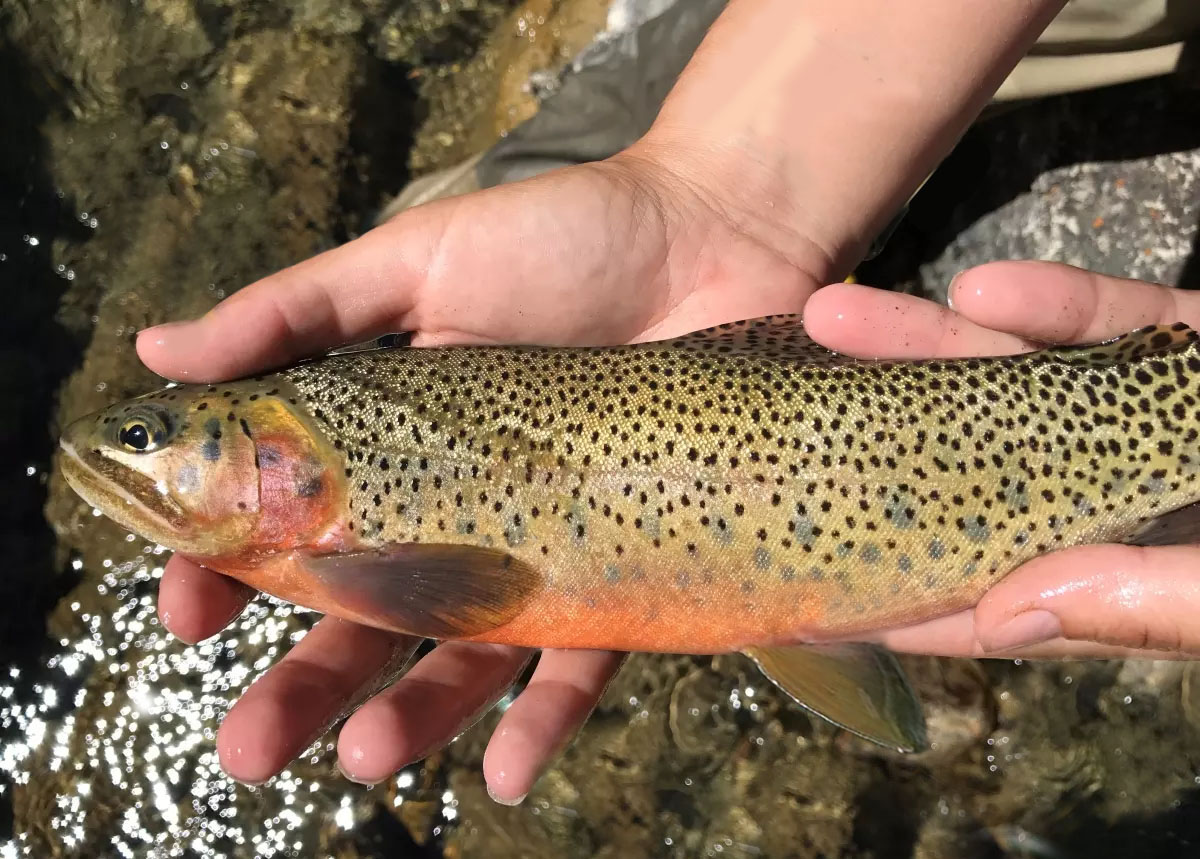
You may hook a whitefish or pike minnow from time to time fishing the Upper Yakima, but the majority of your bites will come from rainbows and cutthroats. On a rare occassion you make hook a steelhead. They’re rare but they do exist in the river. If caught, steelheads should be released immediately to ensure the survival of the species.
Where to wet your line
The Yakima is one of the finest trout fisheries in the Pacific Northwest, but the best trout fishing only occurs along certain sections and stretches of the river. Almost all fly fishing occurs upstream from Roza Dam, and the best fishing is typically even farther upstream. There are two main sections of the river for fly fishing—the Upper and Middle Yakima.
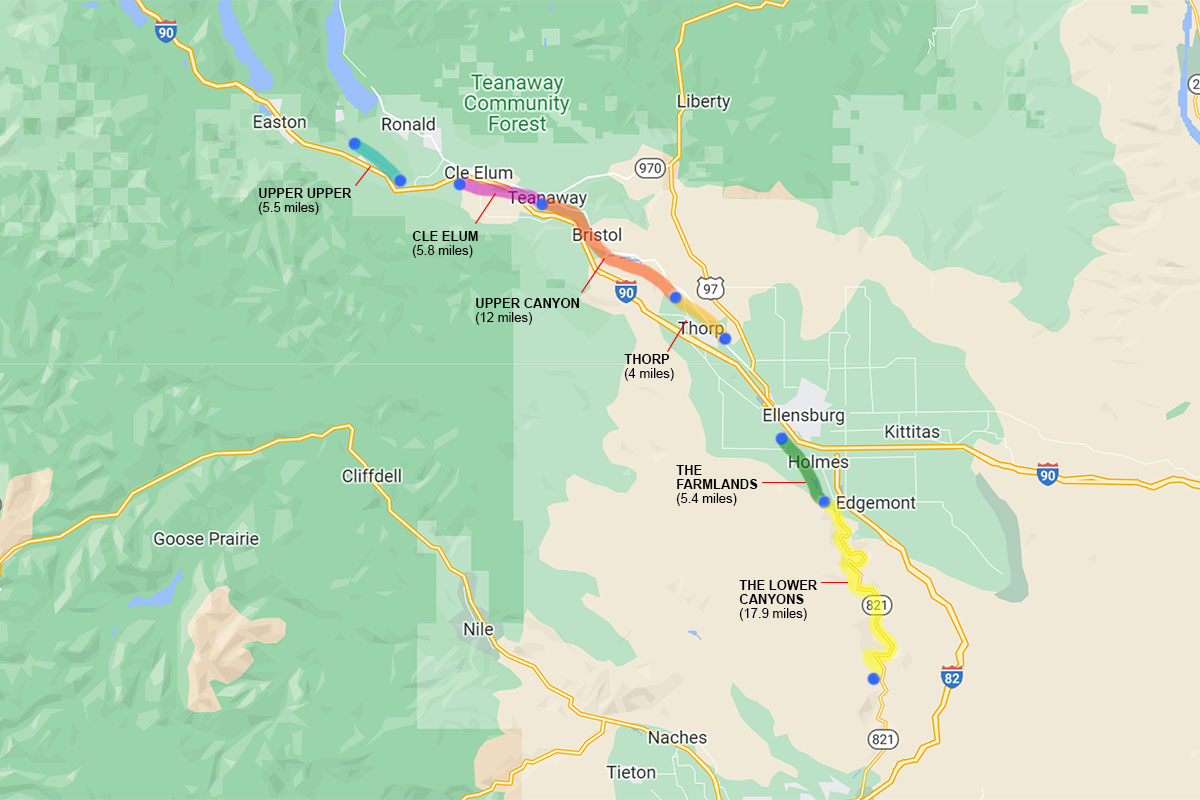
Upper Yakima
The Upper Yakima extends from the Easton Dam—just downstream from Keechelus Lake—to Thorp, Washington. This section of the river is largely considered the best for fishing native Westslope cutthroats. But that isn’t to say the rainbow trout fishing isn’t good. There are plenty of rainbows in the Upper Yakima.
Walk and wade fishing along the Upper Yakima is limited and most anglers go at it by float boat. Floating the Upper section of the river will provide you the best access to—and opportunity to find—trophy trout. If you plan on the wade fishing this section of the river, the best access is downstream of Cle Elum River confluenze through Thorp. Bank access north of Cle Elum is quite limited due to private development.
If you really want to experience fly fishing on the Upper Yakima you need to float it. The are several access points along the Upper Yakima for putting in and taking out, but there are a few tried and true routes for floating this stretch of the river I recommend. They’re outlined in the following table.
| Float Trip Section | Distance | Put In | Take Out |
|---|---|---|---|
| Upper Upper | 5.5 miles | Hundley Road Boat Launch | Bullfrog |
| Cle Elum | 5.8 miles | South Cle Elum | East Cle Elum Boat Launch |
| Upper Canyon | 12 miles | East Cle Elum | Thorp Bridge |
Middle Yakima
The Middle Yakima river flows from Thorp downstream to Roza Dam. The best fly fishing opportunities for trout exist downstream of the town of Ellensburg. This stretch is also where you’re find the most fishing pressure.
Through the spring and summer you’ll find fly hatches galore along the entire stretch and thousands of nice-sized rainbow trout just below the surface. The Middle Yakima provides walk and wade fishing opportunities, and float fishing. If you really want to experience the Middle Yakima, float fishing is the way to go.
There are several access points along the Middle Yakima for putting in and taking out of the river. The following table outlines the most common routes for float fishing the Middle Yakima.
| Float Trip Section | Distance | Put In | Take Out |
|---|---|---|---|
| Thorp | 4 miles | Thorp Bridge | Thorp South Boat Launch |
| The Farmlands | 5.4 miles | Irene Rinehart Park | Ringer Loop Rd |
| The Lower Canyons | 17.9 miles | Ringer Loop Rd | Mile Post 8 Boat Launch |
You can find more information on floating and fishing the Upper and Middle Yakima river at Best Places to Fish the Yakima River.
Habitat
You’ll find rainbow and cutthroats scattered through the Upper and Middle Yakima river, but the two species tend to hold to different sections of the river within the same geography. You’ll find rainbows holding in the areas with faster current and white water. Cutthroats on the other hand tend to stick to the slower moving water along the banks, jetting in and out of the seams to take flies.
How to fly fish the Yakima
If you’re focused on rainbows and cutthroats, you’re going to be fishing the Upper and Middle stretches of the Yakima. Here there are two primary approaches to fly fishing—walk and wade; and float fishing. For avid anglers, float fishing the Yakima is by far the more popular and productive approach. Walk and wade is also popular, but provides limited access to prime fishing spots.
Float fishing is by drift boat, fishing raft, or kayak. Of the three, float fishing by drift boat is the most popular option, and kayak the least. The biggest advantage of fishing by drift boat is stability. You can actually anchor and fish from a drift boat. Fishing from a raft while possible isn’t as easy as drift boat, and drift fishing from a kayak isn’t feasible.
If you’re going to kayak the upper Yakima, you’re really going to be using the kayak to get you from one wading location along the bank to the next. When water flows are above 2,000 cfs kayaking the Yakima isn’t recommended and bank fishing is really limited. The great thing about fishing from a drift boat or raft is that you can still get out and do some wading if you want to.
Your average fly fishing float trip on the Upper Yakima is going to be about 2-4 hours. Float time will depend on your route as well as flow level. Flow level is measured in cubit feet per section (CFS). For every 1,000 CFS your float speed is going to about 1 mile per hour. So, if water flow is 2,000 CFS, and your route is 8 miles, then your expected float time will be about 4 hours—barry any stops.
While more limiting than float fishing, walk and wade fishing is also popular along the Upper and Middle Yakima. There are numerous places you can access the Yakima river along the highway as well as boat ramps and parks with amenities and trails for convenient, easy water access. Review the Yakima River Access Map to see over 30 public access points on the Yakima. Click the link in each map marker to view the location in Google maps.
If you decide to wade fish, make sure to check the water flow for the area you plan on fishing. Fly fishing from the bank, or wade fishing, can be greatly restricted along some sections of the river when flows are above 1,500 CFS.
When to fish the Yakima
From Keechelus Dam to Roza Dam the Yakima is open year round, but timing is everything if you want to have a productive fly fishing experience. Water volumes along the Yakima vary greatly from season to season impacting both accessibility and fishability.
Between the summer months of June and August, river flows vary between 4,000-6,000 CFS (cubic feet per second). This may not sound like a lot of water, but it is. Heavy flows can make wade fishing down right impossible along certain stretches of the river—and boat fishing precarious. Wade fishing is not recommended when flows are above 1,000 CFS.
Yakima River experiences emergency closures from time to time so it always a good idea to check fish regulation before planning your fishing trip. Visit WDFW website at https://wdfw.wa.gov/fishing/regulations to see current fishing regulations.
If you’re set on fishing for rainbow trout, the best months are March through June, and then in October. This is when the larger rainbows come to the surface to feed on Blue Wing Oliver (BWO), Stonefly, Pale Morning Dun (PMD), Mahogany Dun, and October Caddis hatches.
While the Yakima river supports a year-round fishery, fishing tends to slow during the colder winter months. When flow is high, and water is cold, the fishing gets tough. Trout become lethargic and feed less. If you want to fish trout from December through February hit the river with a dry fly or streamer during a warming spell and you should get some good bites.
Fly fishing tips and techniques
I can’t think of a trout river I’d rather fish than the Yakima. If you refine your technique and approach, the Yakima can be a fly fisherman’s paradise. For a local fishery, the Yakima river really is second to none. But this doesn’t mean you can’t or won’t get skunked sometimes. Truth is, the river fishes well for only short flashes. It’s not uncommon to spend an entire day casting flies only to reel in a few minnows. While on other days you’ll reel trophy catches nonstop.
If I could give just one fishing tip, it would be to cover all the water and be patient. There are a lot of trophy trout on the Yakima, but if you’re accustomed to fishing rivers like Montana’s Madison or Alaska’s Upper Kenai where trout concentrations peak at over 5,000+ per mile, you may be dissappointed. Trout concentrations on the Yakima average about 1,000 per mile. This might sound bad, but it’s really not. The key is to find and fish the pockets where trout are holding.
One of the big advantages to float the Yakima river is being able to reach the different pockets where trout are holding. You can access some of these pockets from shore, but you really need to be on the water to get where the fish are.
Fly patterns, hatches and rigs
Creating the right presentation is key to getting trout to strike and having a productive fly fishing experience on the Yakima river. Rainbows and cutthroats aren’t necessarily finicky eaters, but they won’t take something that looks unatural or isn’t recognized as a meal. Matching your fly pattern to the current hatch will greatly improve your changes of catching trout.
The following table lists the fly hatches, recommended fly patterns and rigs for each season of the year for Middle and Upper sections of the Yakima river.
| Season | Rigs | Fly Patterns |
|---|---|---|
| Spring (March-May) | Fish wet flies and nymphs; a double dry fly rig with a dry fly trailed by a pheasant tail or Hare's Ear nymph | Early spring: Skwala stoneflies with nymph, March Brown mayflies with nymph, Blue Wing Olive (BWO) Mayflies and nymphs; Late Spring: American Grammon caddis dries, March Browns dries, Salmonflies, Caddis |
| Summer (June-August) | Hopper Dropper fly rig with large hopper dry fly followed by a nymph; E.g. Chubby Chernobyl, Parachute Hopper, or Dave's Hopper trailed by a pheasantail nymph attractor or Anato Mayfly nymph. | Caddis flies, Small stone flies, Golden stone flies, Mayflies, Terrestrials (hoppers), Streamers (work well all summer) |
| Fall (September-November) | Fish dry fly presentations along river banks with light tippet; Hopper Dropper style rigs work well. | Fish dry fly presentations along river banks with light tippet; Hopper Dropper style rigs work well. |
| Winter (December-February) | Dry flies, streamers, dry fly dropper rig presentation as spring arrives | Early-mid winter: Midges, small nymphs; Later winter: stone flies and attractors |
Matching the hatch is the first part of creating a winning presentation. The second is serving trout their meal on a silver platter. This is done by fishing your flys in a way that looks natural and attracts attention.
A traditional single dry fly setup using a bouyant monofilament main is your go-to presentation. Using a monofilament keeps your line from sinking. Sometimes, when distance casting is essential to reach the strike zone, you’ll want to use the denser fluorocarbon for your main. Attached to your main line is your leader line (6-9ft), and to that your tippet (1-3ft), and fly. For your tippet, go with a 5X-6X when casting smaller flies and bit larger (0X-3X) for larger flies (#8+). For dry fly fishing I recommend sticking with the lighter monofilament for both leader and tippet.
Your basic dry fly setup is going to get the job done most of the time, but during certain times of the year other presentations and setups tend to be more effective. The double dry fly rig, dry fly dropper rig, and hopper dropper are three rigs used for fishing trailing nymphs that work well for fly fishing in spring and summer on the Yakima river.
The double dry fly rig is ideal for fishing very small flies to very picky fish. Sometimes a single size 18 to 20 dry fly is just too small to get the attention of a trout. Adding a second dry fly trailing the first creates a larger presentation that is easier for trout to see. Some anglers say it’s more effective when the trailing fly is larger than the indicator, but I don’t think it makes a big difference. It can be helpful at times to use different fly patterns when trying to match the hatch—or when you’re not sure what that hatch is.
During the spring months you’ll want to fish wet flies—primarily nymphs—to match the hatch as aquatic insect larvae start rising through the wter column. A double nymph rig or dry fly dropper rig with a dry fly indicator and trailing subsurface nymph attractor is one of the more effective presentations for matching the hatch and creating a natural presentation.
As summer arrives and terrestrials start appearing on the menu I trade in my dry fly dropper rig for the hopper dropper rig. The hopper dropper is exactly the same as the dry fly dropper except you’re using a larger hopper pattern for your dry fly instead of a the smaller fly pattern. Fish the hopper dropper along current seams and river banks and you’ll catch some nice-size rainbows.
It’s important to try and match the hatch on the Yakima river—and there are a lot of hatches. But the Yakima is one river where streamers really shine. They’re great for winter fishing, but can be just as effective during the spring and summer months.
Fly fishing regulations
The Yakima is open year round from Keechelus Dam to Roza Dam. It’s managed under selective gear regulations, which means single, barbless hooks only. Either use specialized, barbless hooks to tie your flies or make sure you crimp and file your barbs. You can fish up to 3 flies on the Yakima. All trout must be released.
A final thought…
The Yakima river offers some of the best opportunity for fly fishing, but you still have to be smart if you want to hook a trout. You need to be at the right place, at the right time, with the right presentation if you really want to have a high catch rate.


